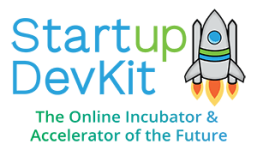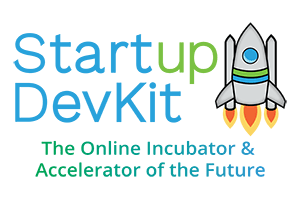Welcome to Lesson 2.4! In this session, we’ll focus on creating a functional specification for your MVP. A functional specification acts as a blueprint for your development team, outlining the features and functionalities of your product. Let’s dive into the details of crafting a comprehensive functional specification tailored to your MVP.
Objectives and Expected Outcomes
- Understand the importance of a functional specification in MVP development.
- Learn how to create a detailed functional specification tailored to your MVP.
- Gain insights into prioritizing features and functionalities for your MVP.
Introduction
Before diving into the nitty-gritty of creating a functional specification, let’s revisit why it’s crucial for the success of your MVP. We’ll discuss its role in aligning your team, guiding development, and ensuring clarity in the product vision. A functional specification acts as a bridge between your vision and the development process, ensuring that your product aligns with your goals and meets the needs of your target audience.
Defining Your MVP Goals
Start by revisiting the primary goals and objectives of your MVP. What problem are you solving for your target audience? What key metrics will define success for your MVP? We’ll explore techniques for defining clear and measurable goals to guide your functional specification.
Identifying Core Features
Referencing the feature roadmap developed in Lesson 2.2, prioritize the core features of your MVP. Distinguish between must-have features essential for validating your product concept and nice-to-have features that can be added in future iterations.
By focusing on must-have features, you ensure that your MVP addresses key user needs while staying within scope and budget.
Market Research and User Personas
Before outlining the features in your functional specification, it’s essential to have a deep understanding of your target market and user personas.
Insights gathered from market research and user personas will inform the functionalities that resonate most with your audience. We’ll discuss how to leverage this information to tailor your MVP to user needs and pain points.
Crafting Your Functional Specification
Now, let’s roll up our sleeves and dive into the process of creating a functional specification for your MVP. We’ll break down the components of a functional specification, including user stories, feature descriptions, user flows, and wireframes/mockups. You will be breaking down and mapping what you need for both your app or product, and your website.
The app’s functional specification takes precedence, but when it comes down to your website, even the most basic things like a home page, about page, product info, pricing page, privacy policy page, etc should be part of your functional spec. You can start from scratch or use templates from Webflow, Bootstrap, WordPress, Elementor, Divi, or even Wix or Squarespace (these last two are not recommended for tech startups).
Tools:
- Documentation Platforms: Use tools like Google Docs, Microsoft Word, ClickUp, or Notion to create detailed functional specifications documents.
- Collaboration Tools: Platforms like Confluence, Quip, or GitHub can facilitate collaboration and version control when documenting functional specifications.
- User Story Mapping Tools: Tools like StoriesOnBoard, Miro, or Jira can help you visualize user stories and prioritize feature development.
Key Takeaways:
- A functional specification serves as a blueprint for your MVP, guiding development and aligning your team.
- Defining clear goals and prioritizing features are essential steps in creating an effective functional specification.
- Real-world insights and case studies offer valuable lessons and inspiration for crafting your own specification.
Key Takeaways
- A functional specification serves as a blueprint for your MVP, guiding development and aligning your team.
- Defining clear goals and prioritizing features are essential steps in creating an effective functional specification.
- Real-world insights and case studies offer valuable lessons and inspiration for crafting your own specification.
Real-World Insight
Consider how different business models will require certain types of core features and what yours will require. Utilize these insights to tailor your functional specifications to your specific business model and target audience.
Case Study: Airbnb
When Airbnb started, the founders aimed to solve a straightforward problem: finding affordable and unique accommodations for travelers. Their initial MVP included basic features such as listings, bookings, and user profiles. By focusing on these core functionalities and continuously gathering user feedback, they were able to iterate and enhance their platform, eventually scaling into the global giant it is today.
- Defining MVP Goals: Airbnb’s primary goal was to connect travelers with local hosts offering accommodations. The success metric was user engagement, specifically the number of bookings made through the platform.
- Identifying Core Features: Must-have features included property listings, user profiles, and a booking system. Nice-to-have features, like host recommendations and community-building tools, were added later.
- User Stories: For example, “As a traveler, I want to search for available properties in my destination so that I can find a place to stay.” This helped prioritize features that directly addressed user needs.
Prioritizing MVP Features
Welcome to the phase where we translate your MVP features into a functional specification. In this lesson, we’ll detail the requirements and specifications for your MVP project.
Now, let’s roll up our sleeves and dive into the process of creating a functional specification for your MVP. We’ll break down the components of a functional specification, including user stories, feature descriptions, user flows, and wireframes/mockups.
By providing clear and detailed instructions, you’ll ensure that your development team can bring your vision to life effectively.
Objectives and Expected Outcomes:
- Functional Requirements: Define the specific functionalities and behaviors of your MVP features.
- Technical Specifications: Specify the technical implementation details and constraints for each feature.
- User Stories: Break down features into user stories to ensure clarity and alignment with user needs.
What You’ll Do:
Functional Requirements:
Detail the specific functionalities and behaviors of each feature in your MVP. What should each feature do? How should it behave? Clearly defining functional requirements will guide the development process and ensure that your MVP meets user expectations.
Technical Specifications:
Specify the technical implementation details and constraints for each feature. Consider factors like compatibility with existing systems, performance requirements, and scalability. Technical specifications provide guidance for developers and ensure that your MVP is feasible to build within your constraints.
User Stories:
Break down features into user stories – short, simple descriptions of a feature told from the perspective of the end-user. User stories help ensure clarity and alignment with user needs, making it easier to prioritize and develop features iteratively.
Real-World Insight:
Consider how different business models will require certain types of core features and what yours will require. Utilize these insights to tailor your functional specifications to your specific business model and target audience.
Case Study: Slack
Slack’s MVP focused on creating a seamless communication tool for teams. The initial version included core features like messaging, file sharing, and integrations with other tools. By iterating based on user feedback, Slack added more advanced features such as custom emojis, advanced search, and a robust API.
- Defining MVP Goals: Slack aimed to simplify team communication and collaboration. Success metrics included user adoption rates and engagement levels (e.g., the number of messages sent per day).
- Identifying Core Features: Must-have features were real-time messaging, searchable message history, and file sharing. Features like custom integrations and advanced search were introduced in later updates.
- User Stories: An example user story might be, “As a team member, I want to send direct messages to my colleagues so that we can communicate privately.”
Key Takeaway:
Creating a functional specification is essential for ensuring that your MVP meets user needs and can be successfully developed within your constraints. By defining functional requirements, technical specifications, and user stories, you provide clear guidance for the development team and increase the likelihood of success.
Assignment
Are you ready to get started with your functional specification?
You will use your inputs from the worksheet from lesson 2.2 to help you create your functional specifications.
Don’t be fooled. The worksheets are visually similar but are different in how they work.
Okay! Let’s get to work!!
Make your own copies of these worksheets by going to File ➡ Make a Copy
MVP Course – Lesson 2.4 Worksheet: Creating a Functional Specification
Lesson 2.4 Worksheet: Creating a Functional Specification
Here’s a snapshot of the worksheet. There are two tabs on the bottom, too – one is for your app/product and the other is for your website.
Functional Requirements
Task 1: Define Functionalities
- List each feature of your MVP.
- For each feature, describe its specific functionalities and behaviors.
- Consider the user experience and how each feature should behave to meet user needs.
Technical Specifications
Task 2: Specify Technical Details
- For each feature, specify the technical implementation details and constraints.
- Consider factors like compatibility, performance, and scalability.
User Stories
Task 3: Break Down Features into User Stories
- For each feature, break down functionalities into user stories.
- Ensure clarity and alignment with user needs
Action Items
- Complete the functional requirements for each feature of your MVP.
- Specify the technical implementation details and constraints for each feature.
- Break down functionalities into user stories to ensure clarity and alignment with user needs.


